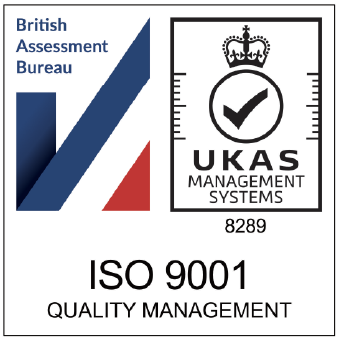Article Overview
Learn how to tackle surplus stock head-on and transform overstock into opportunity. Whether it’s excess inventory after peak season or slow-moving products taking up valuable space, cross-channel liquidation strategies can help. From online marketplaces to direct-to-consumer sales, discover practical ways to recover value, reduce costs, and streamline operations. With the right approach and tools like 3PL’s Fusion platform, surplus stock becomes a smart business opportunity, not a burden.
Managing excess stock after peak sales seasons is a challenge every business faces. Left unchecked, surplus inventory can tie up capital, increase storage costs, and reduce operational efficiency. However, with the right approach, excess stock doesn’t have to be a liability – it can become an opportunity to recover value and boost cash flow. By embracing cross-channel liquidation strategies, businesses can effectively manage their overstock while maintaining profitability and sustainability.
In this blog, we’ll explore various cross-channel liquidation strategies, how they work, and why leveraging them can transform excess inventory into a valuable asset.
What is Cross-Channel Liquidation?
Cross-channel liquidation involves using multiple sales and distribution channels to sell surplus inventory. Rather than relying on a single method to clear excess stock, businesses diversify their approach to maximise reach and revenue potential. This can include online marketplaces, wholesale buyers, discount retailers, and even direct-to-consumer strategies.
By spreading inventory across various channels, businesses can minimise the risk of over-reliance on one outlet while appealing to different customer segments. The goal is to find the right balance between speed, profitability, and customer experience.
Exploring Key Liquidation Channels
1. Online Marketplaces
Platforms like Amazon, eBay, and specialised liquidation marketplaces provide a quick and accessible way to sell surplus stock. These channels allow businesses to tap into a broad audience while retaining some control over pricing. Listing excess inventory on these platforms not only clears stock but can also attract new customers who might not have encountered your brand otherwise.
2. Bulk Sales to Wholesale Buyers
Wholesale buyers or liquidation companies purchase large volumes of excess inventory at discounted rates. While these transactions often yield lower margins, they provide immediate cash flow and clear storage space quickly. Working with trusted buyers ensures a hassle-free process, making it an attractive option for businesses with significant overstock.
3. Discount Retailers and Outlets
Partnering with discount retailers allows businesses to move surplus inventory while maintaining brand visibility. By offering products at lower prices through these outlets, businesses can clear stock without devaluing their core sales channels. Additionally, some retailers specialise in selling products with minor defects, making it an ideal solution for offloading non-standard items.
4. Direct-to-Consumer Liquidation
For businesses with an established eCommerce presence, offering flash sales, bundle deals, or exclusive discounts directly to customers can be highly effective. These strategies not only help clear inventory but also strengthen customer relationships and encourage repeat purchases.
5. Returns Management Companies
Returns management companies, such as ClearCycle, specialise in handling returned products and turning them into revenue. These businesses take on your returns and offer a percentage yield based on the resale or repurposing of the items. This strategy is particularly useful for businesses dealing with large volumes of returns or items that may not fit into traditional resale channels. By outsourcing this process, you save time and resources while recovering value from products that might otherwise go to waste. Returns management companies also bring expertise in refurbishing and remarketing products, ensuring a higher return on investment for your surplus stock.
How to Maximise the Effectiveness of Liquidation Strategies
Effective cross-channel liquidation requires careful planning and execution. Businesses must strike a balance between profitability and operational efficiency while ensuring that their brand reputation remains intact.
Pricing Strategy
Setting the right price is critical to the success of any liquidation strategy. While discounts are expected, businesses should avoid pricing products too low, which can devalue the brand. Instead, adopt a tiered pricing model that adjusts over time based on inventory levels and demand.
Inventory Segmentation
Segmenting inventory by condition, demand, and value helps determine the best liquidation channel for each product. For example, high-demand items may perform better on online marketplaces, while slow-moving or non-standard items might be suited for wholesale buyers.
Customer Communication
Transparency is key when offering discounted or surplus items. Clearly communicate the reasons for the sale – whether it’s seasonal stock clearance or a special promotion, to maintain customer trust and satisfaction.
Leveraging Technology
Tools like 3PL’s Fusion platform provide real-time inventory insights, helping businesses identify which products are best suited for liquidation and where they can achieve the highest returns. Advanced analytics can also optimise pricing and channel selection to maximise revenue recovery.
The Benefits of Cross-Channel Liquidation
Implementing a cross-channel approach to liquidation offers numerous benefits. First, it prevents over-reliance on a single outlet, reducing risks associated with fluctuating demand or channel-specific challenges. Second, it accelerates the clearance of surplus inventory, freeing up valuable warehouse space and reducing carrying costs. Third, it creates opportunities to reach new audiences, increasing brand exposure and potential future sales.
By diversifying liquidation efforts, businesses can transform what might otherwise be a financial burden into a revenue-generating opportunity. With the right strategies in place, excess inventory becomes a stepping stone toward greater operational efficiency and profitability.
Overall Transform Overstock into Opportunity
Excess inventory doesn’t have to drag your business down. By embracing cross-channel liquidation strategies, you can recover value, reduce waste, and improve cash flow. From online marketplaces and wholesale buyers to direct-to-consumer campaigns, the possibilities are vast – and when combined with the right technology and planning, the results can be transformative.
At 3PL, we specialise in helping businesses manage surplus inventory with tailored solutions that include advanced inventory tracking, flexible fulfilment services, and insights through our Fusion platform. Ready to turn your excess stock into an asset? Contact us today to explore how we can support your liquidation strategy.
Speak to 3PL about your order fulfiment
It’s time to supercharge your business and overtake your competitors. Speak to 3PL today and find out how we can take your ecommerce and B2B fulfilment to the next level.






